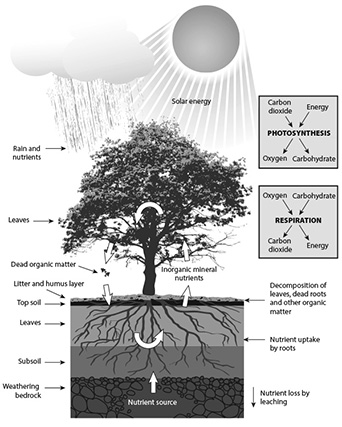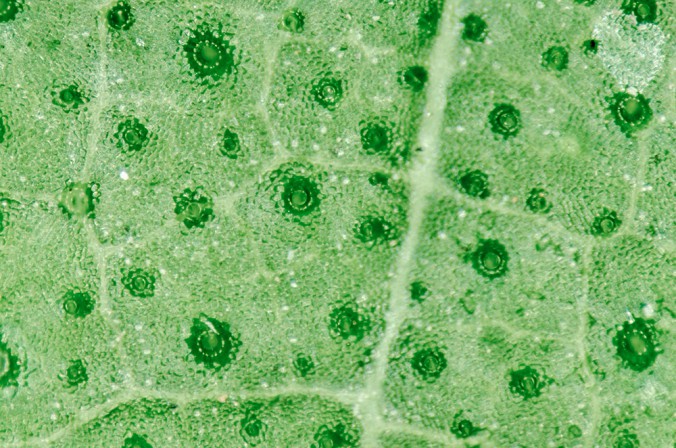Trees have been described as the biological miracle at the very core of human evolution, for not only do they provide the essential ingredients that have given rise to the creation of life, they hold the key to the continuity of humanity. At the most basic level, it is the leaves in the green tree canopies where the truly magic story of nature is to be found.
Within the green, thin and vein-covered fabric of leaves something truly miraculous happens that provides the spark of life. It is the intrigue of how leaves, in a process called photosynthesis, are able to turn carbon dioxide from the sky into giant trees and other plants. How within these green leaf factories the stuff we humans and other animals breathe out is combined with energy from the sun and water drawn up from the ground and turned into carbon based sugars and cellulose to make that renewable commodity wood.
Photosynthesis literally means light synthesis – nature’s way of capturing solar energy and storing carbon. Wood produced by photosynthesis and subsequent timber products store carbon throughout their lifetime.
If you take the time to look at a tree leaf under a microscope, you will see what are indeed tiny holes in the surface. These holes are called stomata. They open and close, and it is through these openings that carbon dioxide is absorbed and oxygen and water vapour released.
When rays of sunlight strike leaves, light wave lengths in the green spectrum bounce back towards our eyes – so we see green. The other light wave lengths – the reds, blues, indigoes and violets – are trapped and their energy is captured and turned into sugars. These simple sugars are combined into larger, more complex cellulose or lignin sugars. It is these complex sugar compounds upon which the plants themselves, animals and indeed civilisations are built.
A description of photosynthesis that I like was written in 2008 by Tim Flannery*. He said:
A lot of people somehow imagine trees grow from the ground, they don’t, they grow from the air, they are congealed carbon dioxide and all of that carbon is stored in them, otherwise it would be out there in the atmosphere heating our planet.

Mineral nutrient cycle.
However, trees and leaves do a lot more than just produce oxygen and ‘lock away’ carbon dioxide. The world would be a much hotter place without them. Trees cool the air by shading and through water evaporation through the stomata. Trees act like pumps to cycle water up from the ground back into the air. The 200,000 leaves on a large eucalyptus tree can take 40,000 litres of water from the soil and breathe it back into the air in a growing season. The cooling effect of all this water going into the atmosphere from just one tree is said to be equivalent to air conditioning twelve rooms.
* Tim Flannery is an Australian scientist, environmentalist and global warming activist. He was Australian of the Year in 2007; the Chief Commissioner of the Australian Climate Commission and held the Chair in Environmental Sustainability at Macquarie University in Sydney, Australia.
